
views
Setting up the Game

Play the game with at least 1 person. SET is typically played in a group, but you can also play the game solitaire-style. Unlike many other card games, SET isn’t turn-based—instead, you and any other players race to collect as many cards as you can.
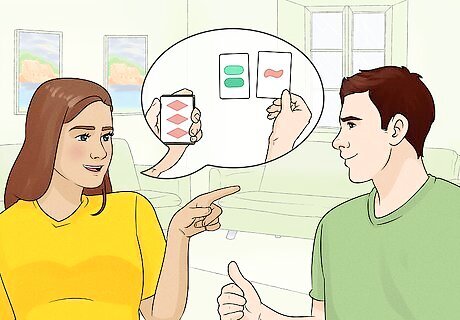
Assign 1 player to be the dealer. SET is a very fast-paced game, and you need to replace cards very quickly throughout the game. Designate 1 player as dealer—this person will set out the initial cards, and replace cards as they get collected by other players.

Arrange 12 cards face-up on a flat surface in a 4-by-3 grid. Shuffle the cards so the deck is out of order. Then, flip the cards face-up in the middle of the play area, so every player can see them.
Identifying Sets
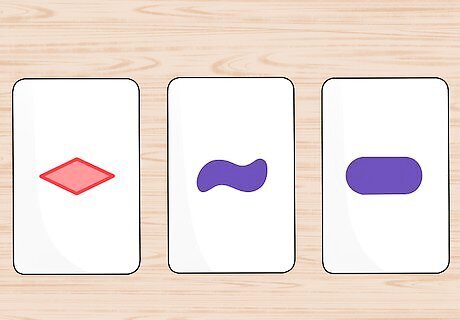
Memorize the different types of SET cards. SET cards are printed with one of 3 different symbols: ovals, squiggles, and diamonds. These symbols will appear in groups of 1, 2, or 3, and will either be red, green, or purple. Some symbols will be solid-colored, others will be striped/shaded, and others will just be outlines.
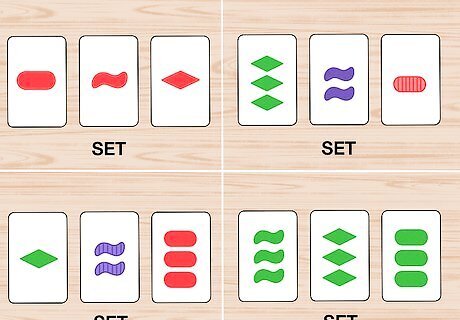
Search for a set in the card grid. A set is a group of 3 cards that either share identical features or have 3 completely different characteristics. Scan over the cards for any noticeable similarities or differences and see if anything sticks out. For instance, a solid red oval, squiggle, and diamond would qualify as a set. A green outlined card with 3 diamonds, a solid purple card with 2 squiggles, and a single red, striped oval is also a set. An outlined green diamond, 2 shaded purple squiggles, and 3 solid red ovals would constitute a set. A set of 3 solid green squiggles, diamonds, and ovals would count as a set.
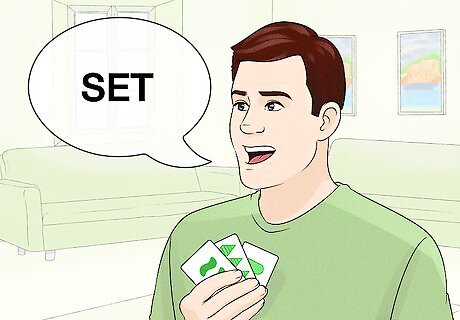
Say “set” before the other players and point out the cards. Yell “set” as soon as you see something—SET is a competitive race to the finish, and isn’t turn-based at all. When you declare “set,” you get “control” of the board—simply point to all the set you’ve found, so players can see what your set is. If 2 people yell “set” at the same time, give control to the person who yelled it slightly before the other.

Pause gameplay and let the other players confirm your set. Give your opponents a few seconds to review, just in case there was a mistake. Don’t collect any cards until the other players give you the go-ahead.
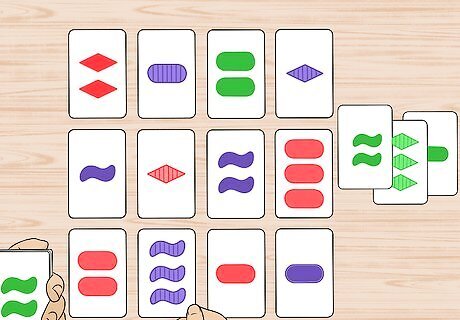
Collect the 3 winning cards and gain 1 point for the set. Grab your set from the card grid and keep it close by. Each set you collect counts as 1 total point. If you falsely identify a set, subtract a point from your total score at the end of the game. Otherwise, continue playing the game as usual.
Finishing the Game
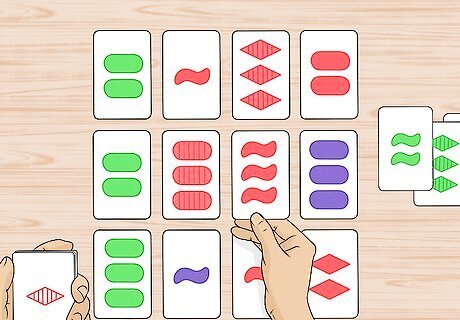
Replace the missing cards in the grid with 3 new ones. Wait for the assigned dealer to fill the empty spaces in the 4-by-3 card grid, placing the new cards face-up. The dealer pulls these cards from the shuffled deck.
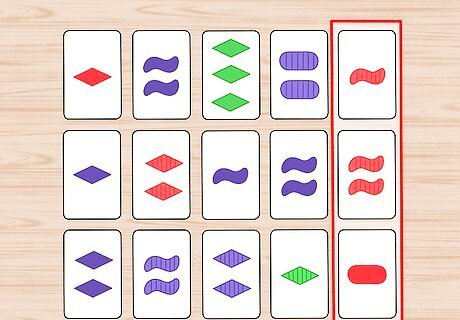
Add 3 extra cards to the grid if you can’t find a set in a game. While it doesn’t happen too often, there might not be a possible set in your 4-by-3 card grid. If this happens, add another column of 3 cards, creating a 5-by-3 grid. Wait for a player to find and collect a new set, and then return to normal gameplay with a 4-by-3 grid. If you’re playing by yourself, adding 3 cards gives you a penalty of -1 point. To win your solitaire SET game, identify a set from the last 12 cards of the deck.

Identify and collect sets of 3 cards as you spot them. SET doesn’t operate in rounds—instead, players call and point out sets as they see them. Continue calling sets as quickly as you can, collecting the cards into your hand as you go.
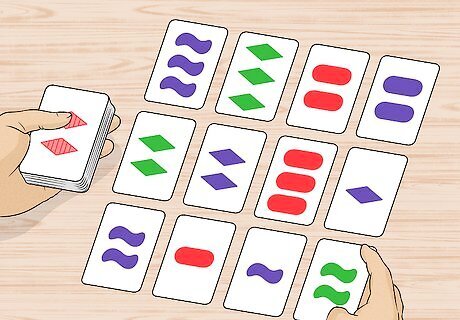
Continue gameplay until there are no cards or sets left in the deck. Keep replacing the SET cards within the grid as more sets are called and collected. End the game once all the cards are gone, or there are no more possible sets. A SET deck has 81 total cards. Depending on gameplay, there might be 6 to 9 unmatched cards leftover at the end of the game.
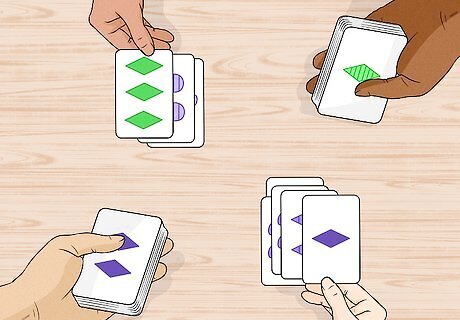
Count the number of sets each player has to declare a winner. Convert each set of 3 cards into 1 point. Then, factor in any penalties you earned throughout the game. Compare your scores with the other players—whoever has the most sets/points is the winner! If you’re playing solitaire SET, try to collect as much of the deck as you can.


















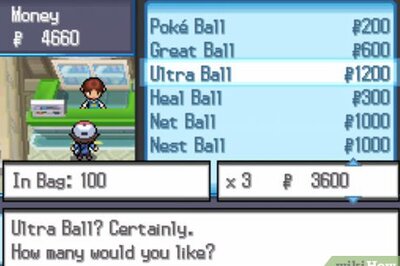
Comments
0 comment